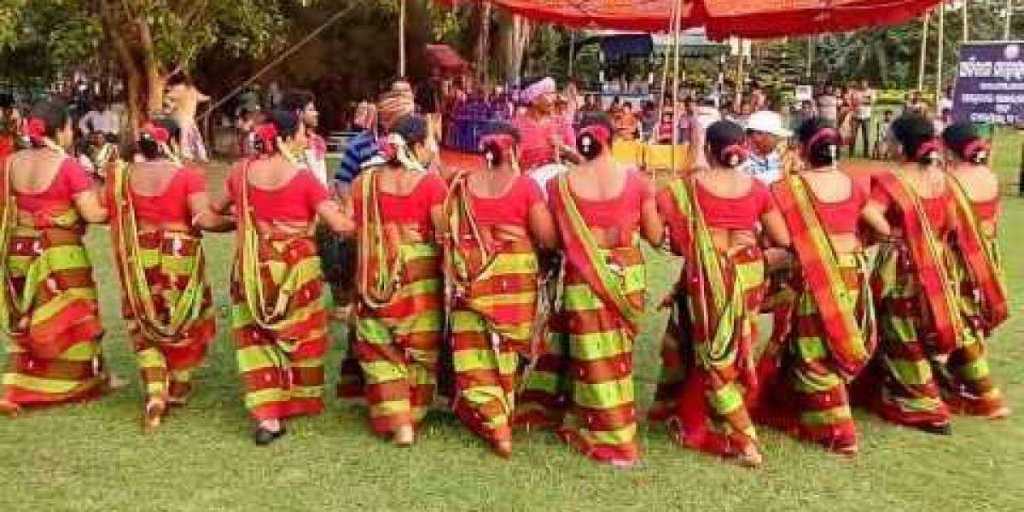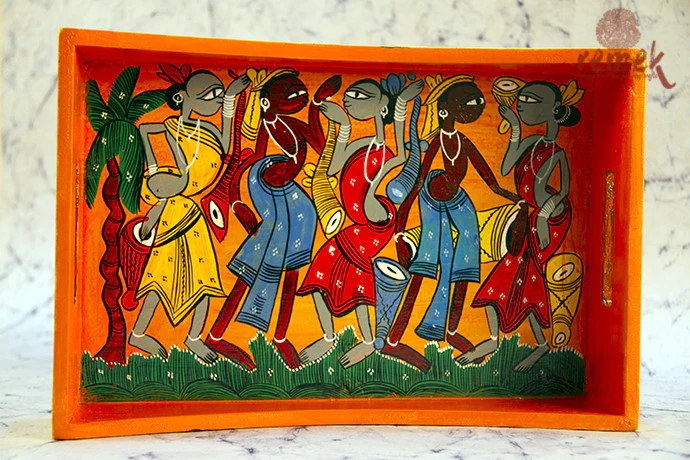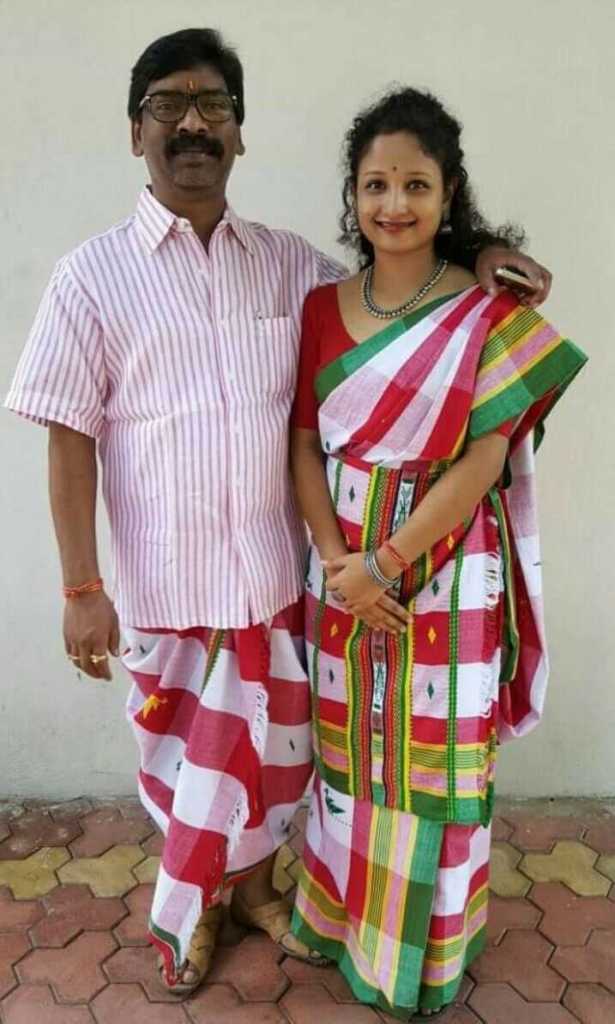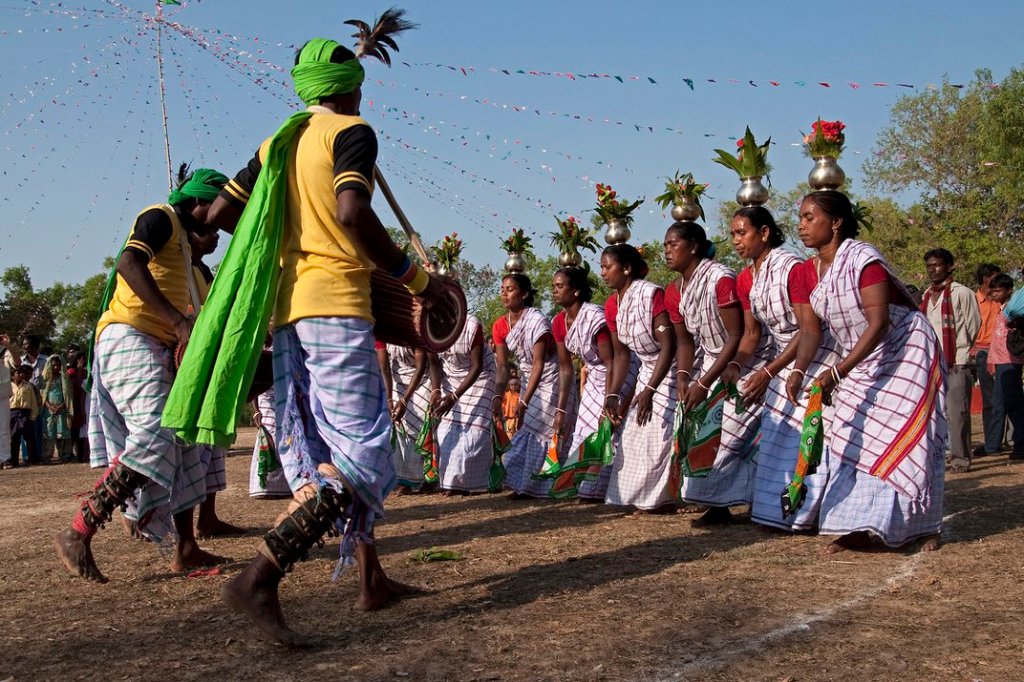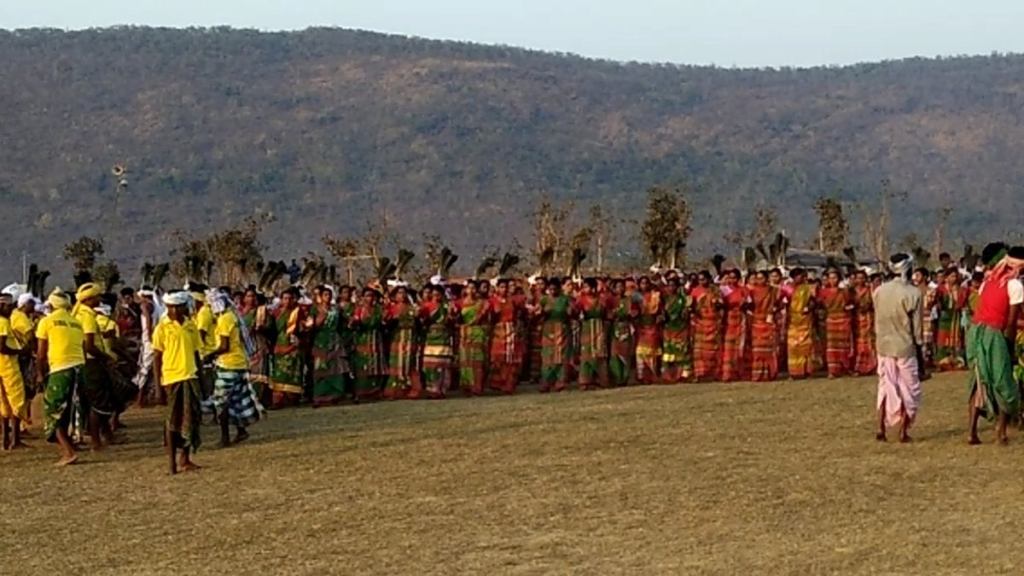The Santal or Santhal are an Austroasiatic speaking Munda ethnic group in South Asia. Santals are the largest tribe in the Jharkhand and West Bengal state of India in terms of population and are also found in the states of Odisha, Bihar and Assam. They are the largest ethnic minority in northern Bangladesh’s Rajshahi Division and Rangpur Division. They have a sizeable population in Nepal. The Santals speak Santali, the most widely spoken Munda languages of Austro-asiatic language family. Santal is most likely derived from an exonym. The term refers to inhabitants of Saont in erstwhile Silda in Medinapore region in West Bengal. The sanskrit word Samant or Bengali Saont means plain land. Their ethnonym is Hor Hopon (“sons of mankind”).
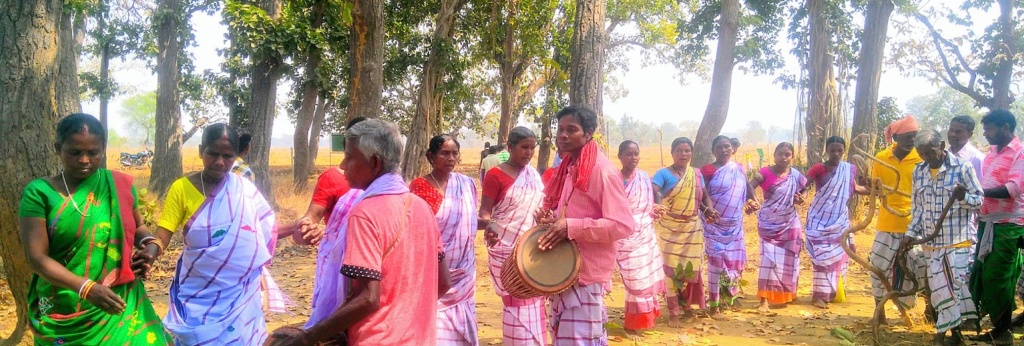
Santhal, also spelled Santal, also called Manjhi, ethnic group of eastern India, numbering well over five million at the turn of the 21st century. Their greatest concentration is in the states of Bihar, Jharkhand, West Bengal, and Orissa, in the eastern part of the country. Some 200,000 also live in Bangladesh and more than 10,000 in Nepal. Their language is Santhali, a dialect of Kherwari, a Munda (Austroasiatic) language. Many Santhal are employed in the coal mines near the city of Asansol, West Bengal, or in the steel factories in Jamshedpur, Jharkhand, while others work during part of the year as paid agricultural labourers. In the villages the most important economic activity is the cultivation of rice. Each village is led by a hereditary headman assisted by a council of elders; he also has some religious and ceremonial functions. Groups of villages are linked together in a larger territorial unit termed a pargana, which also has a hereditary headman. The Santhal have 12 clans, each divided into a number of subdivisions also based on descent, which is patrilineal. Traditionally, members of the same clan do not marry each other. Membership in the clan and subclan carries certain injunctions and prohibitions with regard to style of ornament, food, housing, and religious ritual. Marriage is generally monogamous; polygyny, though permitted, is rare. The traditional religion centres on the worship of spirits, and the ancestral spirits of the headmen are objects of an important cult.

The Santal are the largest of the tribal populations in South Asia. Santals are found in the three adjoining Indian states of Bihar, West Bengal, and Orissa. Migrants work in the tea plantations of Assam, with smaller groups elsewhere in India. There are also Santal communities in northeastern Bangladesh and in the Nepal Terai. Traditionally mixed farmers with a recent past of hunting and gathering, Santals have found their way to employment in agriculture and industry all over eastern South Asia. “Santal” is the only term currently used by outsiders for the tribe. It is also recognized as an ethnic term by the Santals themselves. Hoṛ hopon ko (human children) and Hoṛ ko (men) are used by them in a more traditional or ritual context. The Santal heartland is the area known as the Chota Nagpur Plateau, a hilly area of crystalline Cambrian rocks, strewn with laterite and covered by deciduous forest. The area lies in northeastern India approximately between 22° and 24°30′ N and stretches from 84° to 87° E. Elevation ranges from 200 to 500 meters with mountains over 1,000 meters. Rainfall, concentrated in the July monsoon, totals about 100 to 130 centimeters. Mean temperatures range from 15° to 21° C in January to 26° to 29° C in July.

The Santals form the third largest tribal group in India. Their ancestral homeland is believed to lie in Southeast Asia, where they are associated with the old Champa Kingdom of northern Cambodia. The Santals are thought to have migrated to the Indian subcontinent long before the Aryans entered the Indian subcontinent around 1500 bc. They most likely reached their homeland, the Chota Nagpur Plateau of east-central India, through Assam and Bengal. According to Santal traditions, following the famine of ad 1770, large numbers of Santals migrated from the Chota Nagpur Plateau and the plains south of the Damodar River and established a colony (Damin-i-koh) in what was later to become the Santal Parganas District, now in eastern Jharkhand. In June 1855, Santals in Damin-i-koh began protesting their mis-treatment by landlords, moneylenders, and traders. Failing to get any redress from government officials (the settlement was located in territory administered by the East India Company), the protest turned into a full-scale rebellion. The uprising was quelled by British troops at the cost of hundreds (some say thousands) of Santal lives. Although unsuccessful, the rebellion eventually led to administrative reforms that saw the creation of Santal Parganas District. This has always remained at the center of Santal tradition and activities.
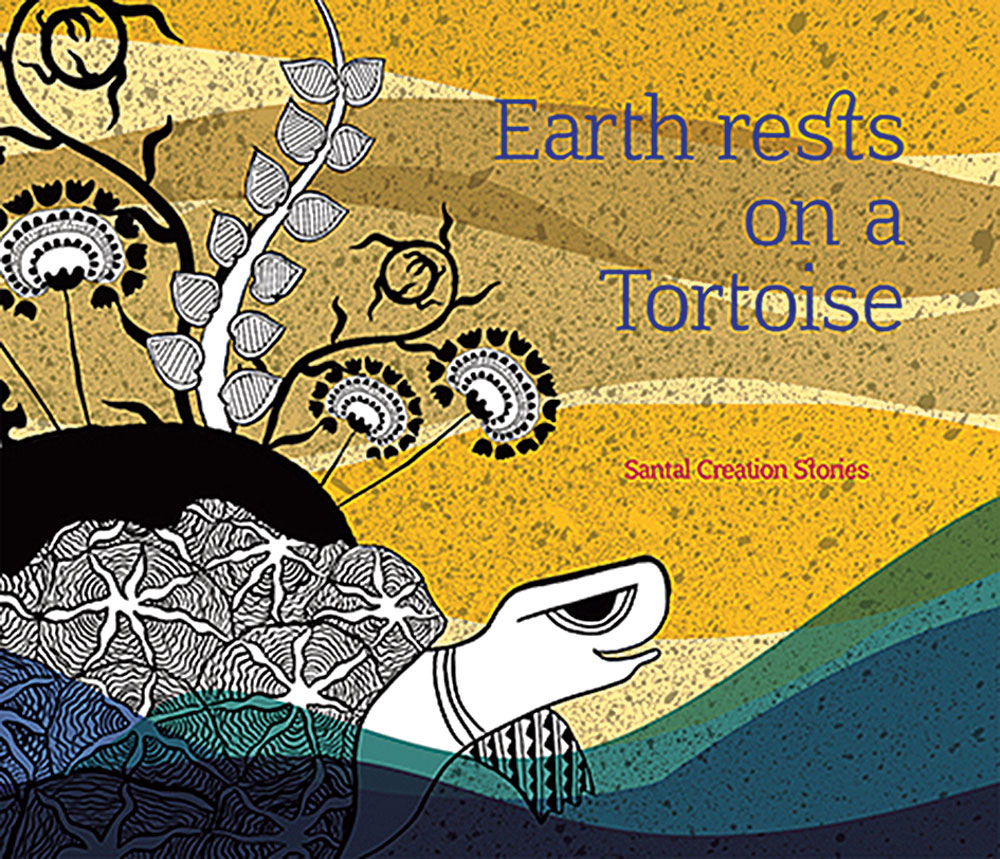
The Santhal tribes are the oldest tribes in Indian forwarded from the Pre Aryan times. The Santhal tribes are still found in few regions of eastern India they are West Bengal, Orissa and Jharkhand. The concentration of the tribes is found in Jamshedpur, Asansol, West Bengal in the industrial belt and the agricultural zones, whereas in Keonjhar and Balasore, Orissa and a number of parts in Jharkhand, Bihar. Santhals belong to the Austro Asiatic family, while they speak Santhali and Mundali language which is also a part of the Austro Asiatic group. The Santhal are the native of Nepal and few parts of eastern India which are still found residing in the remote parts. Santhal tribes are also called the ethnic groups of India but found in less population. In Assam apart from agriculture, they can be seen in the tea gardens plucking tea leaves, residing in the nearby villages. They stay in communities or groups occupying a particular land or village but found in a very minor population spread in different parts of eastern part of India.

In the year 2003, the santhali language has been included in the eighth schedule of the constitution of India. Literature also presented the great dedication of Santhals towards nature. Santhali language and people started getting their identity all over the world. Letters of Ol Chiki script are also derived from the physical environment and what surrounds the people – hills, rivers, trees, birds, bees, plough, sickle, etc. Every year about 50 Santali literature publishes but having no support they are lost. Till now, the extensive work on Santali literature is not well not promoted and supported. A National Academy of Letters, or as called SAHITYA AKADEMI, was founded on 12 March 1954 for the promotion and development of literature in the languages of India. The Sahitya Akademi awards are given every year for the outstanding literary works in Santhali literature.

While academics are divided on the specifics of the origins of the Santhal, research from the University of Oslo suggests that the nomadic community was originally based in the Champa Kingdom of northern Cambodia before migrating to India. Today, the Santhal community is largely concentrated in Odisha, Bihar, Jharkhand and West Bengal. They have a population of over six million in India alone. The Santhals have their own language, Santhali, which has its own script called ‘Ol Chiki’, created by Pandit Raghunath Murmu. Both are officially recognised and there are postgraduate courses that offer specialisation in Santhali.

An indigenous group called Santhals commonly referred to as Manjhis is mostly found in the states of Jharkhand, Odisha, Bihar, and West Bengal. There are more than 5 million Santhals in India alone, according to Britannica. Agriculture is their main line of work. However, many have reportedly started switching to other jobs, such as labourers and coal miners. One of the highest concentrations of the tribe can be seen in Murmu’s hometown, Mayurbhanj. Apart from the Mayurbhanj area, Santhals may be found in Keonjhar and Balasore in Odisha. The name “Santhal” is made up of two words: “santha,” which means quiet and tranquil, and “ala,” which means man, according to the Scheduled Castes and Scheduled Tribes Research and Training Institute (SCSTRTI), Bhubaneswar.

The Santhal community is in the spotlight after a political alliance nominated one of its leaders for the Presidential election, Droupadi Murmu, for the election to the highest Constitutional post of India. Santhal, also spelt as Santal, literally means a calm, peaceful man. Santha means calm, and ala means man in the Santhali (also spelt as Santali) language. Santhals are the third largest Scheduled Tribe community in India after Gonds and Bhils. The Santhali population is mostly distributed in Jharkhand, Odisha and West Bengal.
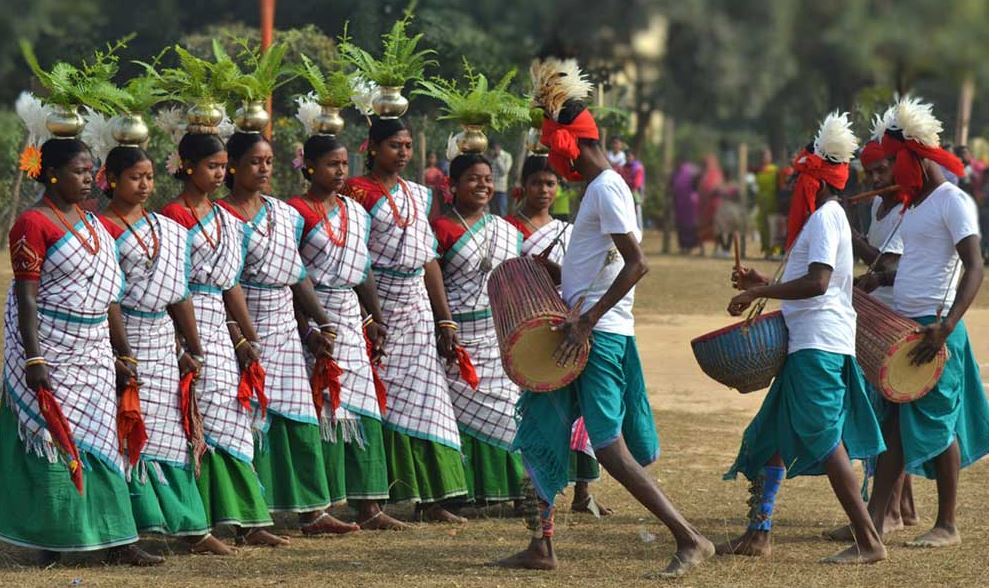
Since ancient times, tribal groups have been a very prominent part of every country. In our own country, India, we see a lot of tribes. The third largest tribe in India is the Santhal tribe. They are mostly found in the states of West Bengal, Bihar, Orissa, Jharkhand and Assam. Santhals belong to the Pre Aryan period. They were the great fighters during the British regime in India. Baba Tilka Majhi was the first Santhal leader who raised weapons against the Britishers in 1789. Santali culture is such that it had and has been attracting many scholars and anthropologists since centuries.
Beginning with their vivid language, Santhals speak Santhali, which belongs to the Austro- Asiatic language family. Santhals have their script called Olchiki. According to the census their population is around 49,000. They are generally bilingual. Apart from Santhali they also speak Bengali, Oriya and Hindi. They are identified by a long head and flat nose. Their complexion varies from dark brown to black in colour. Santhals usually have curly hair.
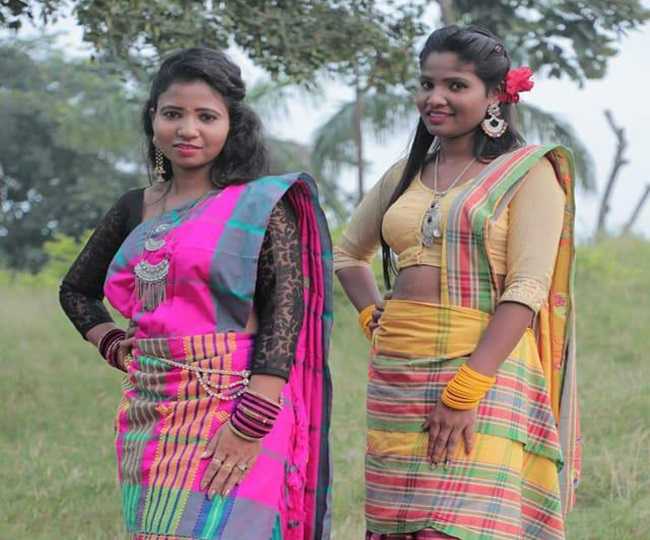
Santhals were the agricultural people settled in Rajmahal Hills of Bihar. British turned to them for the expansion of the revenue through agriculture. Santhals agreed to clear forests to practice settled agriculture. In 1832, a large number of areas were demarcated as Damin-i-Koh or Santal Pargana. However, gradually the exploitation started from the British side and to such an extent, that it gave rise to Santhal Rebellion. The Santhals are the largest tribal group in India today as per the population figures. They are native to the Indian states of predominantly Jharkhand, West Bengal and Odisha.Until the 19th century, they lived their lives in harmony with nature and practised shifting agriculture and hunting. They lived in the hilly regions of Birbhum, Barabhum, Manbhum, Palamau and Chhotanagpur.These areas came under the Bengal Presidency whose rule passed onto the British after the Battle of Plassey in 1757. The Santhal life was disrupted by the onslaught of the Zamindari system that they introduced. They were rendered landless bonded labourers in their own homes.

The people belonging to Santhal tribe are quite progressive and well settled. Traditional leadership and close knit communities are the most prominent features of this community. A section of this community has converted into Christians and leads a comparatively modern way of life. This style of living has also introduced modern political system. The people are hard working and during off season migrate to Assam or West Bengal. Although Santhals are settled cultivators but modern technologies could not affect their practices. Gathering forest products are the second most important occupation of Santhals. Women play a crucial role in the society and enjoy rights in customs and traditions. During religious sacrifices women are not allowed except in the times when these sacrifices are held at the houses of family gods or ancestors. However, with the impact of modern lifestyle Santhal women have acquired new identity in the fields of education, science, art and culture, games and sports etc. Marriage system among the tribal people is guided by their typical customs and rituals. All sorts of marriages are practiced in the society including widow remarriage, polyandry, monogamy, bigamy, polygamy etc. For Santhals, marriage is a social necessity and these people get their children married at a small age. Adult marriages occur only in exceptional cases. Divorce is also a known concept in tribal communities.

The Santhals celebrate their biggest festival, Sohoray, from the end of Paush and for the entire month of Magh. They also celebrate festivals like Janthad Lonan Puja, Baha Utsav, Aerak Parba or Ashare Puja and Sakranti (Fagu) Parba (Ijam). “Karam” festival is celebrated by the Santhals in the month of Aswin (September- October) in order to have increased ‘wealth and progeny’ and to get rid of the evil spirits. During this festival, two youths after being purified, fetch two branches of Karam tree from the forest and plant them just outside the house. The head of the household offers rice beer and other articles to Manjhi Haram and Maran Buru and pray for the prosperity of the house. This worship is followed with singing, dancing and playing of instrumental music. All those present there, are given rice-beer. The traditional dress of Santhal women is called Pandhat, which is a covering from the chest to the foot. Bow and arrows are the favourite weapons of Santhals.
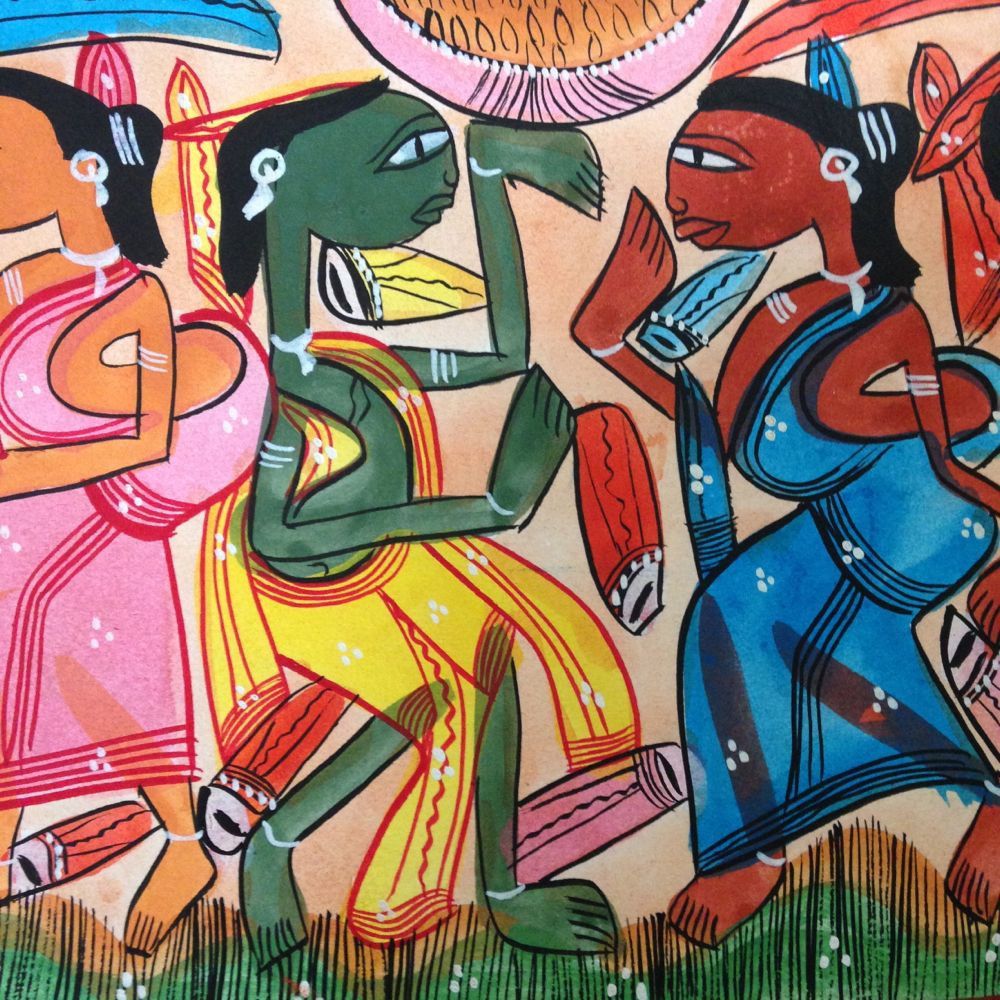
We, the Santals are one of the largest homogeneous tribal communities of India, counting
more than 10 million people. Apart from India, Santals live in neighboring countries, in
Bangladesh, Nepal and Bhutan. Despite this geographical distance, Santals share the same
language, cultural tradition and values. Santals’ social and religious system is very complex
and complete in itself. Each village has five representatives who are selected by the village
community through consensus to run the village. They are ‘Manjhi baba’ the headman, ‘Jog
Manjhi’ the assistant-headman, Naike, the priest, Paranik the youth guide, and Godet, the
convener. All kinds of disputes, including any family and personal problems, are discussed in
the village meetings and are settled through common consent. Santals have some classical
song-melodies and various music- and dance-forms that are sung and performed the same
way wherever Santals live. They have oral traditions, songs, and ritual play an important role
in cultural maintenance and transmission. Some music tunes have been slightly modified due
to the cultural influence of the various population groups that live near Santal villages.
However, the musical instruments and the basic rhythms are the same as they used to be ages
ago.

Santhal tribes are a racial group of eastern India. They are also called Manjhi. There are approximately a million Santhal tribes in the 21st century. They are the native of Nepal and eastern India. Their favourite food is Pahariya food which includes rice, watery potato gravy and watery pulses with salt and chilly to improve the taste. Santals are also good hunter-gatherers and clear forests for agriculture. They live as acquaintances of other communities maintaining cultural and social distancing with them. The Santhal tribes believe in the Goddess of Santhal Marangburu, Jaheraera, and Manjhi. They believe in the Sarna religion. Santals tribes are one of the economically poor communities of India. The Santhal Tribes are the largest and one of the stalest tribes of India. They live in Bihar, Chhattisgarh, Assam, Odisha and West Bengal.
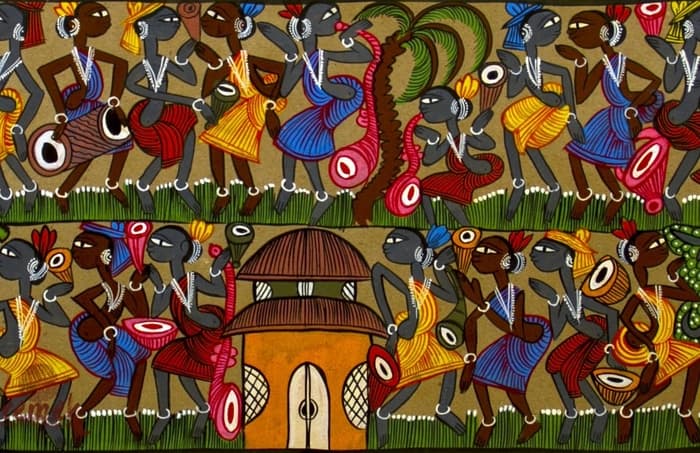
Santhals belong to the Pre Aryan period. They were the great fighters during the British regime in India. They wagged war against the permanent settlement of Lord Cornwallis in 1855. During the late 1850 Santhals hero Sidhu had accumulated around 10 thousand Santhals to run parallel government against the British government. Baba Tilka Majhi was the first Santhal leather who raise weapons against the Britishers in 1789. Santhals speak Santhali, which belongs to the Austro- Asiatic language family. Santhals have their script called Olchiki, which was developed by Dr Raghunath Murmu in 1925. Accoring to the census their population is around 49,000. They are generally Bilingual. Apart from Santhali they also speak Bengali, Oriya and Hindi. Santhals have long head and flat nose. Their complexion varies from dark brown to black in colour. Santhals usually have curly hair.
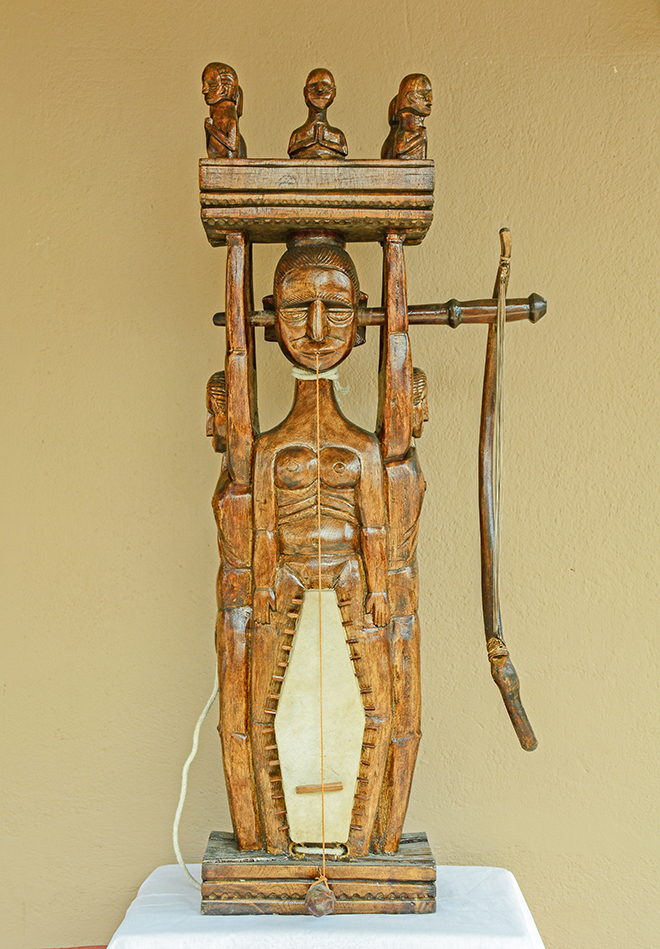
The language of the Santals, Santali, belongs to the North Mundari group of languages, part of the Austroasiatic language family. The original home of the Santals is believed to have been the Champa Kingdom of northern Cambodia; their traditions indicate migration into India by way of Assam and Bengal. Santals typically live in separate villages numbering from 400 to 1000 inhabitants each. Until recently, mud houses were preferred; houses are often decorated with floral designs. Houses normally have verandas and at least two rooms, of which the ‘inner room’ (chitar) contains the ancestors and the granary protected by them. The Santals were originally hunters and gatherers. As a group, they have a broad knowledge of plants and animals. They also have an advanced hunting technology in the form of a wide variety of traps. Over time, their economic base shifted to slash-and-burn agriculture and husbandry; today they grow wet rice in terraced fields. On the plains, irrigation by canals and ditches is used. The Santals are generally non-vegetarian, and keep cattle, goats, and poultry. Fishing is important whenever they have access to rivers and ponds.
